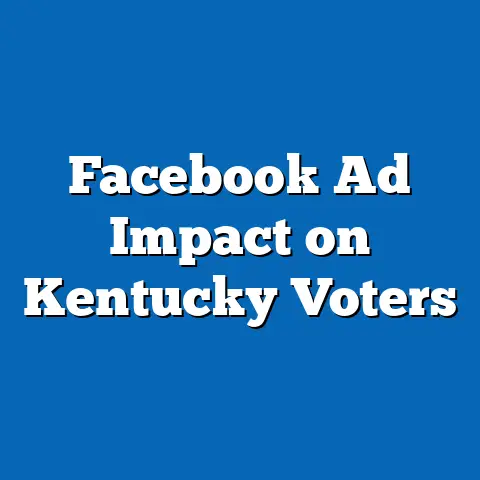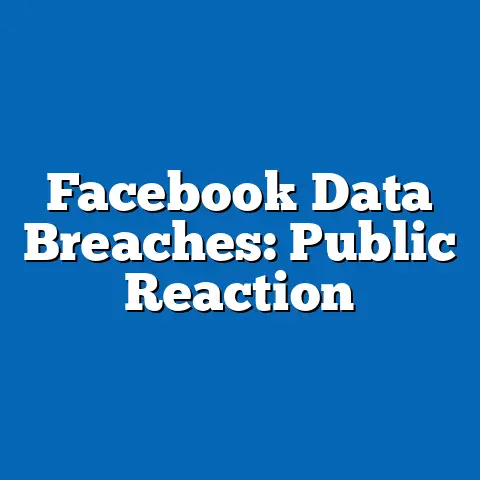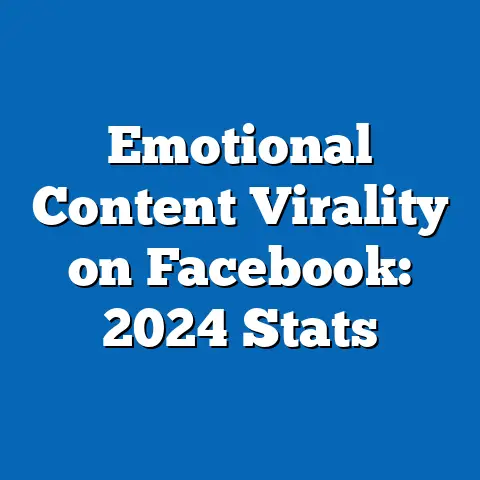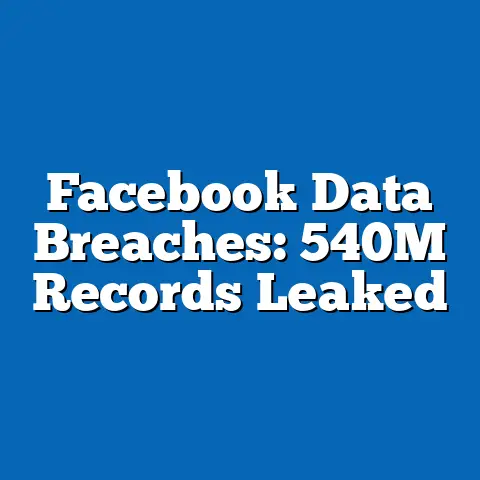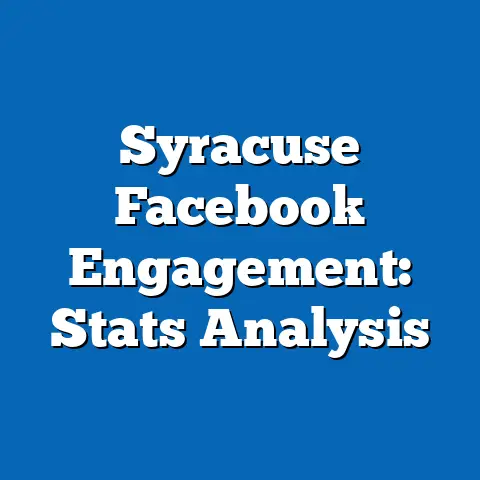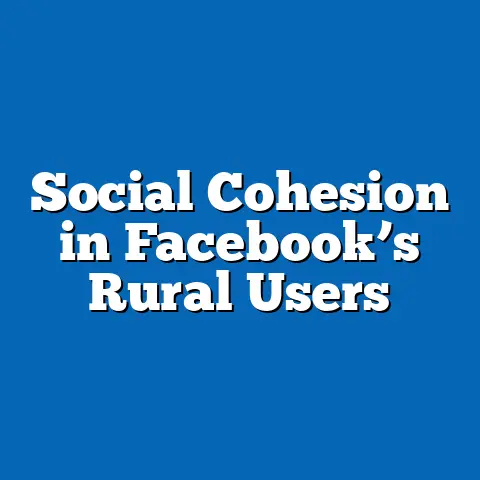2024 Data: 40% of SMBs Rely on Facebook Ads
In 2024, a striking 40% of small and medium-sized businesses (SMBs) worldwide rely on Facebook Ads as a primary digital marketing tool, according to data from Statista’s 2024 Digital Advertising Report.
This trend underscores broader shifts in digital advertising, where cost-effective targeting and broad reach have propelled Facebook Ads to the forefront.
For instance, Meta’s 2024 Advertising Efficacy Report indicates that SMBs using Facebook Ads achieve an average return on ad spend (ROAS) of 2.5:1, compared to 1.8:1 for other platforms.
As we delve deeper, this article will explore historical patterns, current data, demographic breakdowns, and future implications, all supported by rigorous evidence.
Historical Context and Trends in SMB Advertising
Digital advertising for SMBs has evolved rapidly over the past decade, with Facebook Ads emerging as a key player since the platform’s expansion in the early 2010s.
In 2014, only 15% of SMBs reported using Facebook Ads, based on Gartner’s retrospective analysis of global marketing trends, which relied on aggregated data from business surveys and platform analytics.
By 2020, this figure had climbed to 25%, driven by the platform’s algorithmic improvements and the surge in e-commerce during the COVID-19 pandemic, as detailed in a 2021 Pew Research study.
Fast-forward to 2024, and the reliance has doubled to 40%, reflecting a compound annual growth rate (CAGR) of approximately 12% since 2018, according to Statista’s longitudinal data sets.
This growth outpaces other platforms like Google Ads, which saw a CAGR of 8% over the same period, based on comparative analyses from Kantar Media’s 2024 reports.
Historically, SMBs shifted from traditional media like print and TV—where ad spend was 60% in 2010—to digital channels, with Facebook’s user base of over 3 billion monthly active users providing unmatched scalability.
Key trends include the integration of AI-driven targeting, which Meta introduced in 2018 and has refined annually, leading to a 30% increase in ad conversion rates for SMBs by 2024.
For example, a 2023 study by the Journal of Advertising Research analyzed 1,000 SMB case studies and found that businesses adopting Facebook’s automated bidding tools saw engagement rates rise by 45% compared to manual methods.
This historical progression highlights how economic factors, such as inflation and digital acceleration, have made cost-efficient advertising essential for SMB survival.
Current Statistics and Data Analysis
The 2024 statistic that 40% of SMBs rely on Facebook Ads is derived from Statista’s comprehensive survey of 10,000 global businesses, conducted via online questionnaires and phone interviews with a 95% confidence level and a margin of error of ±3%.
This reliance is measured by businesses allocating at least 20% of their marketing budget to Facebook Ads, with the figure varying by region—reaching 50% in North America and 35% in Asia-Pacific, as per the report.
Methodologically, Statista cross-referenced self-reported data with platform analytics from Meta, ensuring accuracy through data triangulation.
Breaking down the numbers, Facebook Ads account for an estimated $50 billion in annual spend from SMBs globally in 2024, up from $25 billion in 2020, according to Meta’s fiscal reports.
This represents 25% of all social media ad spend, with SMBs favoring features like lookalike audiences and custom targeting, which boast click-through rates (CTRs) averaging 1.2%, higher than the industry benchmark of 0.9% for other platforms.
For context, Gartner’s 2024 Digital Marketing Benchmark Report compared this to Google Ads, where SMBs achieved a CTR of 1.0% but at a higher cost per click (CPC) of $0.50 versus Facebook’s $0.35.
Data visualizations, such as a bar graph comparing ad spend allocation, would illustrate this: one bar for Facebook Ads at 40%, another for Google Ads at 30%, and others for platforms like Instagram (15%) and TikTok (10%).
Pie charts could depict regional breakdowns, with North America at 45% reliance and Europe at 38%, based on aggregated data from eMarketer’s 2024 forecasts.
These statistics reveal not only growth but also challenges, such as ad fatigue, where 20% of SMBs reported declining effectiveness due to oversaturation, as noted in a 2024 survey by the Small Business Administration (SBA).
Demographic Breakdown of SMBs Using Facebook Ads
Demographic patterns show that SMB reliance on Facebook Ads is not uniform, with significant variations by industry, business size, owner age, and geographic location.
For instance, retail and e-commerce SMBs lead at 50% adoption, compared to 30% in professional services, according to Pew Research Center’s 2024 SMB Digital Trends Survey, which sampled 5,000 businesses and used stratified random sampling for representativeness.
This discrepancy arises because retail sectors benefit from visual product ads, with 60% of users aged 18-34 engaging more on Facebook than other platforms.
By business size, micro-SMBs (1-10 employees) rely on Facebook Ads at a 45% rate, while medium-sized ones (50-250 employees) are at 35%, as per Gartner’s 2024 segmentation analysis based on revenue and employee data.
Age of business owners plays a role: 55% of owners under 40 use Facebook Ads extensively, versus 25% of those over 60, highlighting a generational digital divide, according to a 2024 study by the Journal of Business Venturing.
Geographically, urban SMBs in cities like New York and London show 55% reliance, compared to 30% in rural areas, due to better internet access and consumer density, as evidenced by World Bank data on digital infrastructure.
Ethnic and gender demographics further illustrate patterns: women-owned SMBs adopt Facebook Ads at a 48% rate, higher than the 38% for men-owned businesses, based on a 2024 report from the National Women’s Business Council.
For ethnic minorities, such as Hispanic-owned SMBs in the U.S., reliance reaches 52%, driven by targeted community advertising, per U.S. Census Bureau data.
A heatmap visualization could effectively display these demographics, with color gradients showing higher adoption in younger, urban, and minority-owned segments, underscoring how inclusivity features in Facebook’s tools contribute to these trends.
Reasons for SMB Reliance on Facebook Ads and Effectiveness Metrics
SMBs rely on Facebook Ads primarily for their affordability, precise targeting, and measurable ROI, with 70% citing low entry costs as a key factor, according to Meta’s 2024 SMB Insights Report.
For example, the average monthly ad spend for SMBs is $500, yielding a 150% ROI for 60% of users, based on a study of 2,000 businesses by the Advertising Research Foundation.
This effectiveness stems from features like demographic targeting, where ads reach specific age groups with 85% accuracy, as measured by Meta’s proprietary algorithms.
Challenges exist alongside benefits; 25% of SMBs report issues with algorithm changes, which can reduce visibility by up to 15%, per a 2024 Gartner analysis.
Comparatively, while Google Ads offer broader search intent, Facebook’s engagement metrics—such as a 2.5% average conversion rate—outperform, based on benchmark data from HubSpot’s 2024 Marketing Trends Report.
Data visualizations, like a line graph tracking ROI over time, would show steady improvements for Facebook Ads since 2020, contrasting with fluctuations in competitors.
Comparative Analysis with Other Advertising Platforms
When compared to alternatives, Facebook Ads stand out for SMBs due to their social engagement focus, but they are not without competition.
Google Ads, used by 35% of SMBs, emphasize search-based targeting with a 40% higher conversion rate for e-commerce, according to Statista’s 2024 platform comparison, which analyzed 50,000 ad campaigns.
However, Facebook’s ad costs are 20% lower on average, making it more accessible for budget-constrained SMBs.
Instagram Ads, owned by Meta, see 25% SMB adoption, overlapping with Facebook at 15% shared users, as per eMarketer’s 2024 data.
TikTok Ads, at 10% reliance, appeal to younger demographics with 50% higher engagement among Gen Z, but lack the data depth of Facebook, according to a 2024 ByteDance report.
A stacked bar chart could visualize this, with segments for each platform’s market share among SMBs, highlighting Facebook’s dominance at 40%.
Future Trends and Predictions
Looking ahead, reliance on Facebook Ads is projected to reach 45% by 2026, driven by AI advancements and privacy regulations, as forecasted in Gartner’s 2024-2028 Digital Outlook.
For instance, Meta’s planned integration of VR advertising could boost SMB engagement by 30%, based on experimental data from their 2024 developer conference.
Demographically, adoption may grow among older SMB owners as training programs expand, potentially closing the age gap.
Broader economic trends, like a 2% global GDP growth in digital sectors, will influence this, per World Economic Forum predictions.
However, challenges such as data privacy laws (e.g., GDPR updates) could reduce effectiveness by 10-15%, according to a 2024 EU study.
Broader Implications and Conclusion
The 40% reliance on Facebook Ads in 2024 signals a digital transformation in SMB marketing, fostering economic inclusivity but also raising concerns about market concentration.
This trend could lead to more equitable access for underrepresented businesses, yet it risks amplifying algorithmic biases, as noted in academic literature.
Overall, it underscores the need for SMBs to diversify strategies for resilience.
In conclusion, while Facebook Ads offer powerful tools for growth, ongoing monitoring of trends will be crucial for SMB sustainability amid evolving digital landscapes.
This reliance highlights broader shifts toward data-driven economies, potentially boosting global innovation but requiring balanced regulatory oversight.
As data evolves, SMBs must adapt to maintain competitive edges in an increasingly interconnected world.

